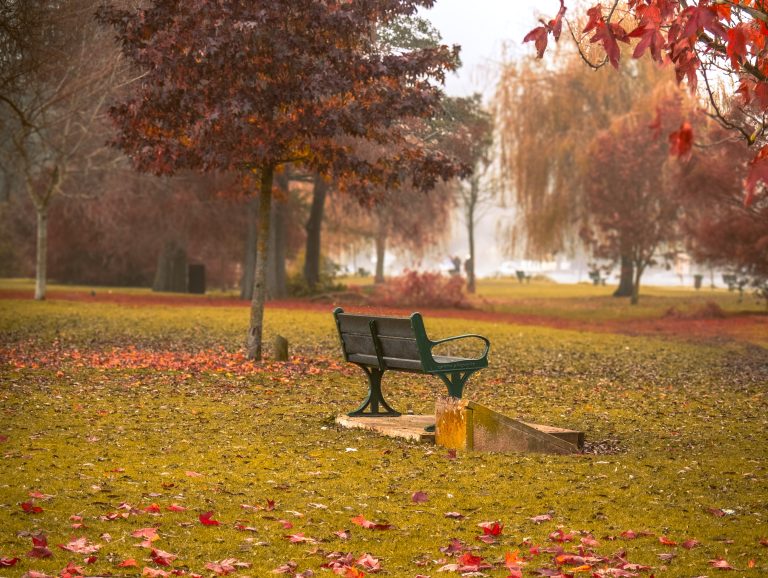This curated reading list outlines 5 key areas of Reading’s history. Click on each section heading to find out more.
All of the books mentioned are in our library. To book an appointment to use these volumes, email our Information and Engagement Manager at rachel.riddell@millsarchive.org.

Rivermead Park, Richfield Avenue, Reading, UK
Photography by Enes Gundogdu, Unsplash
Reading as a Town
In “Reading: A History” by Joan Dils, the book meticulously explores Reading’s evolution from a small fifth-century settlement to England’s largest town. Dils highlights the town’s strategic importance, attracting civilizations over a millennium. King Henry I’s 1121 abbey foundation transformed Reading into one of England’s wealthiest towns. The book tracks Reading’s prosperity from traditional industries to a knowledge economy hub by the 20th century.
Likewise, “The Story of Reading” by Daphne Phillips, published in 1980 and revised until 1999, offers a concise modern history of Greater Reading. The third edition details Reading’s growth to over 200,000 by 1999, emphasizing historical richness and industrial shifts, establishing it as a key centre in England. Phillips’ authoritative account is a valuable resource for residents and visitors, capturing Reading’s extensive history.
Industries of Reading
In “Huntley & Palmers of Reading (1822-1972): Quaker Enterprise in Biscuits” by T.A.B. Corley, the book explores the evolution of Huntley and Palmers from a small family shop in 1822 to a major food manufacturing industry player. Examining business management and the influence of Quaker principles, Corley humanizes key figures, providing a vibrant perspective on the company’s 150-year development.
In “Robert Stone, Miller of Pangbourne” edited by J. Kenneth Major, diaries from the 1870s offer insights into the social history and operations of a water-driven corn mill, detailing the life of a Victorian miller.
Lastly, “The Kendrick Book” by H. M. Appleby, written in 1948, covers the lives of John and Mary Kendrick, founders of the Kendrick School in Reading.
Reading’s Excavations and Archaeology
“Under the Oracle” and “Green Park (Reading Business Park): Phase 2 Excavations” provide archaeological insights into Reading’s history. The Oracle excavations, conducted by Oxford Archaeology before the shopping centre’s construction, reveal the Kennet floodplain’s medieval and post-medieval development. Covering water management, milling, tanning, and more, it spans from medieval to 19th century, unveiling the Oracle Workhouse and the Yield Hall. Specialized reports explore pottery, glass, dendrochronology, and a fascinating 12th- to 13th-century cookhouse of Reading Abbey.
“Green Park” details Neolithic and Bronze Age findings, including a ring ditch, field system, and late Bronze Age settlement. The burnt flint mound prompts a thorough discussion on its function and landscape significance.
Reading’s Rivers
“Queen of Waters” by Kirsten Elliott chronicles the history of the Kennet and Avon Canal, an 87-mile waterway connecting London and Bristol. Constructed in 1794 for trade, the canal faced decline with the rise of railways but experienced a revival in the late 20th century through restoration projects. Today, it stands as a testament to England’s industrial history, offering a scenic route.
“The Upper and Middle Thames” by Josephine Jeremiah explores the River Thames, spanning 215 miles from Kemble to Reading. The book highlights the river’s picturesque journey, cultural significance in Reading, and recreational opportunities, emphasizing its role in England’s geographical and historical tapestry.
Finally, “The Thames Locks” by John Kemplay delves into the transformation of the River Thames from 1630 to 1928, focusing on the introduction of locks, their impact on navigation, and the changing role of the river from transporting goods to hosting pleasure vessels.
Greater Reading
“The Commons: Re-Enchanting the World” by Catherine Morland and Amanda Couch delves into the profound meaning of shared resources, exploring their intricate relationship with users. Silvia Federici’s insights connect reproductive labour devaluation to 18th-century land enclosures, influencing industrialization and gender roles. Garrett Hardin’s “Tragedy of the Commons” impacts global land privatization, leading to new enclosures, notably in Africa. The Turkana in Kenya, recognizing communal land rights, face marginalization. This collaboration with the Museum of English Rural Life explores diverse commons perspectives, shifting from resource-centric views to essential communal practices. It culminates in an exhibition and events, urging the revival of commons in daily life.
Audrey Curtis’s “Twyford and Ruscombe through the Ages” narrates the villages’ evolution from Stone Age settlements to vibrant communities, detailing influences from outside events, significant estates, education, and leisure activities. This exploration offers a comprehensive understanding of the social and historical foundation supporting Twyford and Ruscombe’s current vitality.

